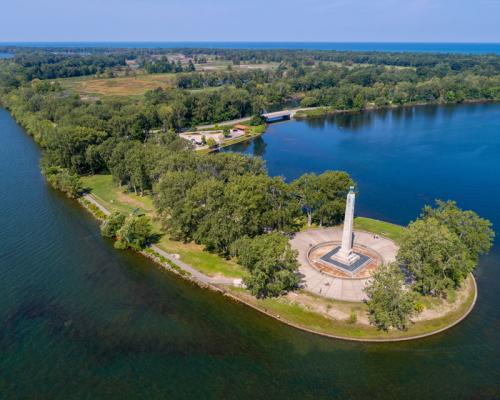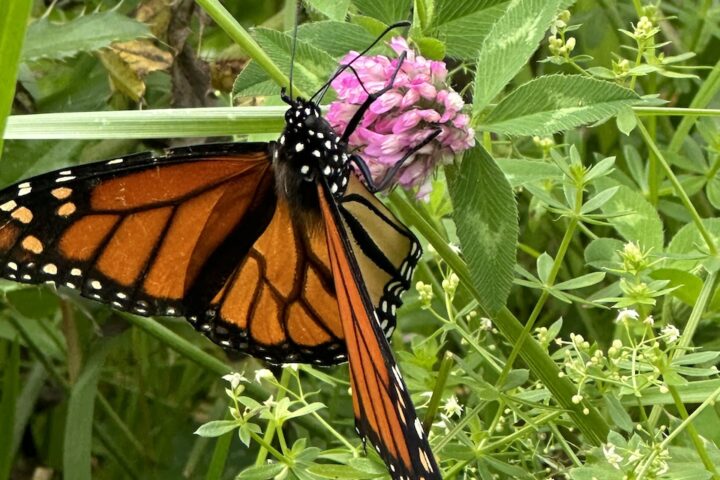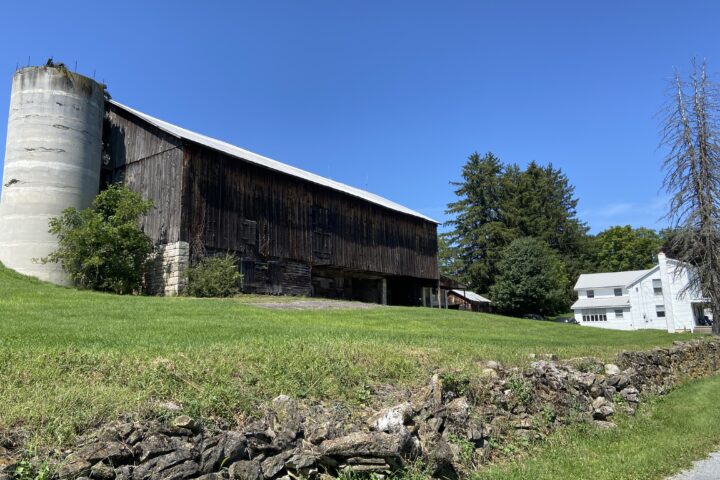
Presque Isle State Park, source: Visit PA.
Many people love the beauty and tranquility of Lake Erie. Pennsylvanians annually flock to its shoreline to watch sunsets, boat, fish, swim and partake in many activities and adventures. But in the midst of all of the natural beauty and recreational opportunities are hundreds of aquatic invasive species that are threatening the health and biodiversity of this vital and important natural ecosystem.
In the new film, “Seeing The Unseen: Aquatic Invaders & What’s at Stake,” executive produced by Western Pennsylvania Conservancy (WPC) staff members, conservationists explore how aquatic invasive species are negatively affecting the Lake Erie watershed, share restoration methods and projects underway to reduce the spread of aquatic invasive species, and provide actions nature lovers and outdoors enthusiasts can take to help reduce the risk from invasives.
Invasive species are non-native species that do not occur naturally in an area and grow quickly and aggressively. They can be detrimental to native plants and animals by competing for resources, resulting in the displacement of native species, reduction of biodiversity and alteration of natural habitats.
Mary Walsh, invertebrate zoology manager, and Amy Jewitt, Pennsylvania iMapInvasives program coordinator, work for the Pennsylvania Natural Heritage Program at the WPC on invasive species projects and are executive producers of the new film. They agree that the issue of invasive species in the Lake Erie watershed is both pervasive and concerning.
As a regional recreation hub, Lake Erie receives visitors who may unintentionally bring invaders. Mary explains that boaters, anglers and other recreationists may accidentally import invasive species on their boats or gear. On their boots, hikers may transfer seeds from invasive plants to the trails on the Lake Erie shores.
Mary also says the accidental introduction of invasives also comes from large cargo ships. “Lake Erie and the rest of the Great Lakes receive ships from around the world. Ballast water brought from other waterbodies and dumped into the Great Lakes is the source of many of the invasive species that are now present there. Once an invasive species is introduced to Lake Erie, it’s very difficult to remove it,” she shares.
Thanks to grant funding from the Great Lakes Restoration Initiative, a group of conservation organizations and partners led by the WPC have been working on various efforts over the past several years to identify, study and assess invasives in Lake Erie and several important areas within its watershed located in northwest Pennsylvania, including Lake Pleasant, Presque Isle State Park and French Creek. These partners include the Pennsylvania Sea Grant, PA Fish and Boat Commission, PA Department of Conservation and Natural Resources, Lake Erie Watershed Cooperative Weed Management Group, and French Creek Valley Conservancy.
“We are extremely grateful to our funding partner GLRI, which helped make this film, and the ongoing work to improve the Lake Erie watershed, possible,” Mary adds.
Grant funding also paid for the production of this new film, “Seeing The Unseen: Aquatic Invaders & What’s at Stake,” which was produced by Emmy Award-winning production company Great Lakes Media & Film. “Seeing The Unseen: Aquatic Invaders & What’s at Stake” is available to watch online for free. This 44-minute film can be viewed for free at WaterLandLife.org/SeeingtheUnseen.
For more information, or to request speakers or a screening opportunity for your community group or organization, please contact Mary Walsh at 814-689-1823 or [email protected].
This post adapted from a release by the WPC.



